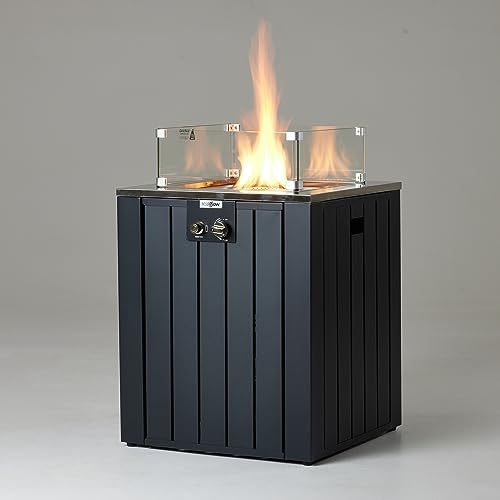Gas Patio Heaters: 11 Things That You're Failing To Do

Gas Patio Heaters in the UK: A Comprehensive Guide
As the seasons change and temperatures drop, outdoor living areas can end up being less comfortable. However, the right heating service can change a cold garden or patio into a welcoming and cozy environment. Among the numerous options available, gas patio heaters have actually gained popularity in the UK. This guide intends to provide readers with an in-depth take a look at gas patio heaters, their benefits, types, maintenance, and considerations for selecting the right one for your outdoor space.
What is a Gas Patio Heater?
A gas patio heater is an outdoor heating appliance that uses gas (butane or propane) as its fuel source. Developed to warm outdoor locations, these heaters can be tactically positioned to supply heat for events, barbecues, or simply lounging outside even throughout cooler evenings. Gas patio heaters can be found in various styles and capacities, making them appropriate for a vast array of outdoor spaces.
Advantages of Gas Patio Heaters
Gas patio heaters provide a number of advantages over other heating options, making them a popular option for UK property owners. A few of the essential advantages include:
- Quick Heating: Gas patio heaters provide immediate heat, allowing users to enjoy their outdoor spaces without waiting for the heater to warm up.
- Energy Efficiency: Compared to electric heaters, gas patio heaters generally consume less energy, which can result in lower fuel expenses, especially in bigger locations.
- Movement: Many gas patio heaters are designed with wheels, making them simple to walk around the garden or patio.
- Climatic Ambience: Gas heaters provide a warm glow that improves the outdoor environment, making gatherings more welcoming.
Types of Gas Patio Heaters
When thinking about a gas patio heater, it's essential to comprehend the various types offered on the market. Below are the main ranges:
- Standing Heaters: These are the most typical type, including a tall pole that supports the heating element. They can efficiently warm bigger areas and often included a variety of heat output settings.
- Tabletop Heaters: Smaller and often more portable, tabletop heaters can be put on outdoor tables and are ideal for intimate events.
- Wall-mounted Heaters: These systems are fixed to a wall and provide an irreversible heating solution for patio areas with minimal space.
- Fire Pit Heaters: Combining warmth with a main decorative element, fire pits can create a focal point for outdoor locations while offering heat.
Comparison Table of Gas Patio Heater Types
| Type | Ideal For | Heat Output | Mobility |
|---|---|---|---|
| Standing Heaters | Big locations | High | Moderate (wheeled) |
| Tabletop Heaters | Little gatherings | Moderate | High (portable) |
| Wall-mounted Heaters | Limited spaces | Moderate | Low (fixed) |
| Fire Pit Heaters | Ornamental usage | Variable | Low (set) |
Factors to Consider When Choosing a Gas Patio Heater
Choosing the ideal gas patio heater involves thinking about a number of elements to make sure suitability for your needs and outdoor space. Here are the critical elements to keep in mind:
- Heating Capacity: Measured in BTUs (British Thermal Units), a greater BTU ranking indicates a more powerful heater. A typical heater ranges from 30,000 to 50,000 BTUs.
- Fuel Type: Common options include propane and butane. Propane is frequently preferred due to its adaptability and accessibility.
- Size of the Outdoor Area: Consider the space you want to heat. Bigger areas may need numerous heaters or a high-capacity design.
- Design and Aesthetics: Gas patio heaters come in different styles to complement outdoor decor. Choose a style that fits your space.
- Safety Features: Look for heaters with security shut-off valves, stability functions, and good building products to reduce fire risks.
Upkeep Tips for Gas Patio Heaters
To make sure optimum performance and longevity, routine maintenance is essential for gas patio heaters. Here are some best practices:
- Regular Cleaning: Clean the heater routinely to prevent dust and particles accumulation. Utilize a moist fabric and mild detergent.
- Inspect for Leaks: Inspect gas connections regularly for leakages. Apply soapy water to connections; bubbles indicate a leak.
- Store Properly: If not in use for an extended period, save the heater inside your home to safeguard it from weather damage.
- Inspect for Damage: Regularly look for rust, dents, or any signs of wear that might impact efficiency or safety.
Frequently Asked Questions (FAQs)
1. How long do gas patio heaters last?Gas patio
heaters can last between 5 to 15 years, depending upon usage, upkeep, and quality of the system.
2. Can I use a gas patio heater indoors?No, gas patio heaters are developed for outdoor use only. Using them indoors can lead to carbon monoxide gas poisoning. 3. What is the typical expense of a gas patio heater?Prices for gas patio
heaters in the UK can range from ₤ 50 to over ₤ 300, depending upon
the type, brand, and additional features. 4. Do I need a gas line for a patio heater?Not necessarily. Numerous gas patio heaters use portable propane tanks, although some designs can be linked to a set gas line. 5. see this website to use?When utilized according to the manufacturer's guidelines and safety preventative measures, gas patio heaters are usually safe. Nevertheless, always ensure correct ventilation when in usage. Gas patio heaters offer an exceptional option for extending the functionality of outdoor spaces in the UK. They supply warmth, comfort, and an inviting atmosphere, making outdoor events enjoyable even in cooler weather. With different types to select from, comprehending the advantages, maintenance, and choice requirements will empower customers to make educated options tailored to their particular requirements. By purchasing the right gas patio heater, homeowners can develop a welcoming outdoor haven that can be delighted in throughout the year.

